Ford Mustang Mach-E vs Hyundai IONIQ 5 – Which one offers the better deal?
Compare performance, boot capacity, efficiency and price at a glance.
Find out which car is the better choice for you – Ford Mustang Mach-E or Hyundai IONIQ 5?
Costs and Efficiency:
Looking at overall running costs, both models reveal some interesting differences in everyday economy.
Hyundai IONIQ 5 has a clearly perceptible advantage in terms of price – it starts at 38500 £, while the Ford Mustang Mach-E costs 48400 £. That’s a price difference of around 9943 £.
In terms of energy consumption, the advantage goes to the Hyundai IONIQ 5: with 15.60 kWh per 100 km, it’s slightly more efficient than the Ford Mustang Mach-E with 17.70 kWh. That’s a difference of about 2.10 kWh.
As for range, the Ford Mustang Mach-E performs barely noticeable better – achieving up to 600 km, about 30 km more than the Hyundai IONIQ 5.
Engine and Performance:
Power, torque and acceleration say a lot about how a car feels on the road. This is where you see which model delivers more driving dynamics.
When it comes to engine power, the Hyundai IONIQ 5 has a noticeable edge – offering 650 HP compared to 487 HP. That’s roughly 163 HP more horsepower.
In acceleration from 0 to 100 km/h, the Hyundai IONIQ 5 is minimal quicker – completing the sprint in 3.50 s, while the Ford Mustang Mach-E takes 3.80 s. That’s about 0.30 s faster.
In terms of top speed, the Hyundai IONIQ 5 performs distinct better – reaching 260 km/h, while the Ford Mustang Mach-E tops out at 200 km/h. The difference is around 60 km/h.
There’s also a difference in torque: Ford Mustang Mach-E pulls to a small extent stronger with 950 Nm compared to 770 Nm. That’s about 180 Nm difference.
Space and Everyday Use:
Whether family car or daily driver – which one offers more room, flexibility and comfort?
Both vehicles offer seating for 5 people.
In curb weight, Hyundai IONIQ 5 is slightly lighter – 1955 kg compared to 2161 kg. The difference is around 206 kg.
In terms of boot space, the Hyundai IONIQ 5 offers barely noticeable more room – 520 L compared to 519 L. That’s a difference of about 1 L.
In maximum load capacity, the Hyundai IONIQ 5 performs somewhat better – up to 1580 L, which is about 160 L more than the Ford Mustang Mach-E.
When it comes to payload, Hyundai IONIQ 5 to a small extent takes the win – 530 kg compared to 450 kg. That’s a difference of about 80 kg.
Who wins the race?
The Hyundai IONIQ 5 proves to be is largely superior and therefore becomes our DriveDuel Champion!
Hyundai IONIQ 5 is the better all-rounder in this comparison.
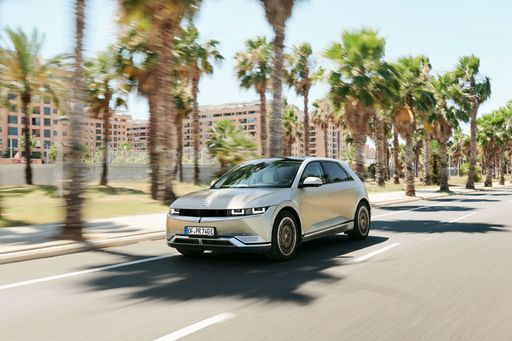
Hyundai IONIQ 5
Ford Mustang Mach-E
The Ford Mustang Mach-E marks a new chapter in the legacy of the iconic American brand, combining classic muscle car aesthetics with modern electric vehicle technology. Its sleek design captures the spirit of innovation while offering a spacious and tech-savvy interior for enhanced driving comfort. The Mach-E promises an exhilarating driving experience, packed with cutting-edge features that set a new standard for electric SUVs.
details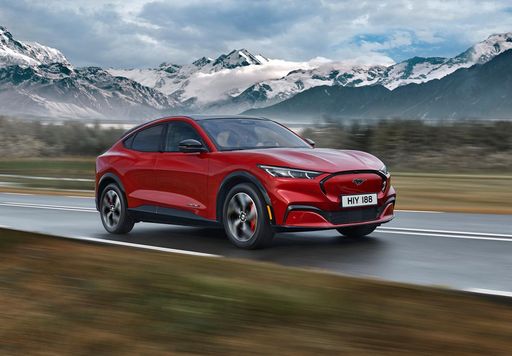 @ mustang.fordpresskits.com
@ mustang.fordpresskits.com
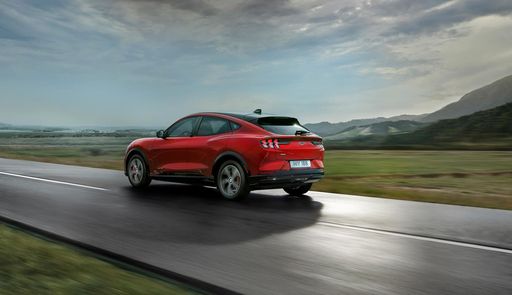 @ mustang.fordpresskits.com
@ mustang.fordpresskits.com
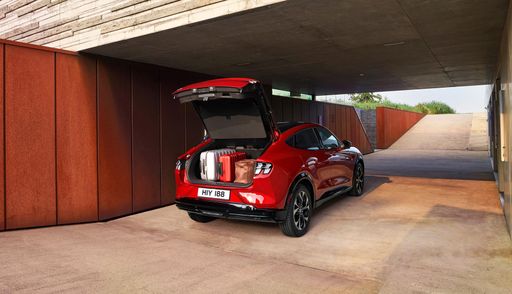 @ mustang.fordpresskits.com
@ mustang.fordpresskits.com
 @ mustang.fordpresskits.com
@ mustang.fordpresskits.com
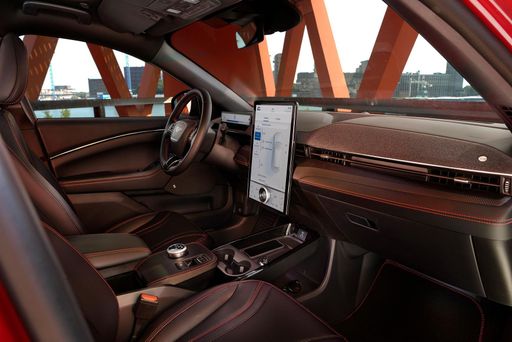 @ mustang.fordpresskits.com
@ mustang.fordpresskits.com
Hyundai IONIQ 5
The Hyundai IONIQ 5 showcases a bold and futuristic design that captures attention with its striking facade and sharp lines. This electric vehicle offers an impressive blend of performance and efficiency, making it a compelling choice for environmentally conscious drivers. Inside, the spacious and tech-forward interior provides a comfortable and engaging driving experience for both driver and passengers.
details @ hyundai.news
@ hyundai.news
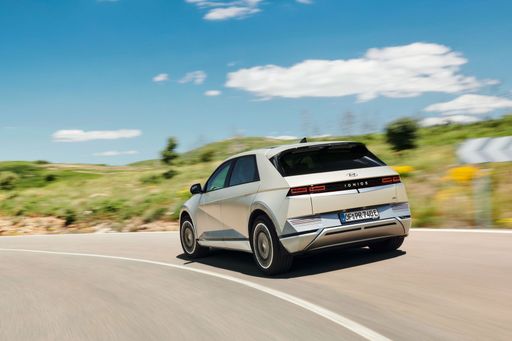 @ hyundai.news
@ hyundai.news
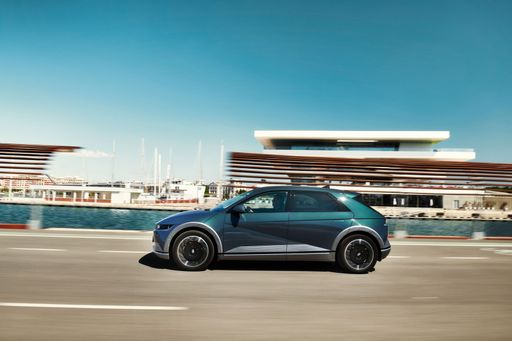 @ hyundai.news
@ hyundai.news
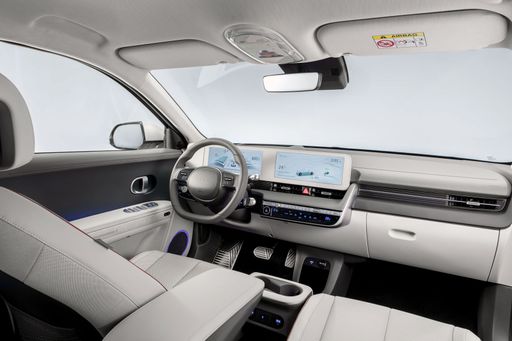 @ hyundai.news
@ hyundai.news
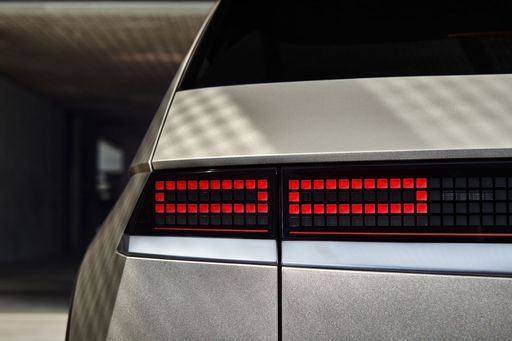 @ hyundai.news
@ hyundai.news

|

|
|
|
|
Costs and Consumption |
|
|---|---|
|
Price
48400 - 66900 £
|
Price
38500 - 64200 £
|
|
Consumption L/100km
-
|
Consumption L/100km
-
|
|
Consumption kWh/100km
17.7 - 21 kWh
|
Consumption kWh/100km
15.6 - 21.2 kWh
|
|
Electric Range
470 - 600 km
|
Electric Range
440 - 570 km
|
|
Battery Capacity
73 - 91 kWh
|
Battery Capacity
63 - 84 kWh
|
|
co2
0 g/km
|
co2
0 g/km
|
|
Fuel tank capacity
-
|
Fuel tank capacity
-
|
Dimensions and Body |
|
|---|---|
|
Body Type
SUV
|
Body Type
SUV
|
|
Seats
5
|
Seats
5
|
|
Doors
5
|
Doors
5
|
|
Curb weight
2161 - 2351 kg
|
Curb weight
1955 - 2275 kg
|
|
Trunk capacity
519 L
|
Trunk capacity
480 - 520 L
|
|
Length
4713 - 4743 mm
|
Length
4655 - 4715 mm
|
|
Width
1881 mm
|
Width
1890 - 1940 mm
|
|
Height
1613 - 1624 mm
|
Height
1585 - 1605 mm
|
|
Max trunk capacity
1345 - 1420 L
|
Max trunk capacity
1540 - 1580 L
|
|
Payload
368 - 450 kg
|
Payload
385 - 530 kg
|
Engine and Performance |
|
|---|---|
|
Engine Type
Electric
|
Engine Type
Electric
|
|
Transmission
Automatic
|
Transmission
Automatic
|
|
Transmission Detail
Reduction Gearbox
|
Transmission Detail
Reduction Gearbox
|
|
Drive Type
Rear-Wheel Drive, All-Wheel Drive
|
Drive Type
Rear-Wheel Drive, All-Wheel Drive
|
|
Power HP
268 - 487 HP
|
Power HP
170 - 650 HP
|
|
Acceleration 0-100km/h
3.8 - 6.2 s
|
Acceleration 0-100km/h
3.5 - 8.5 s
|
|
Max Speed
180 - 200 km/h
|
Max Speed
185 - 260 km/h
|
|
Torque
525 - 950 Nm
|
Torque
350 - 770 Nm
|
|
Number of Cylinders
-
|
Number of Cylinders
-
|
|
Power kW
197 - 358 kW
|
Power kW
125 - 478 kW
|
|
Engine capacity
-
|
Engine capacity
-
|
General |
|
|---|---|
|
Model Year
2025
|
Model Year
2024
|
|
CO2 Efficiency Class
A
|
CO2 Efficiency Class
A
|
|
Brand
Ford
|
Brand
Hyundai
|
What drive types are available for the Ford Mustang Mach-E?
The Ford Mustang Mach-E is offered with Rear-Wheel Drive or All-Wheel Drive.
The prices and data displayed are estimates based on German list prices and may vary by country. This information is not legally binding.
